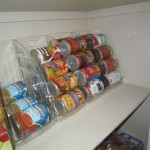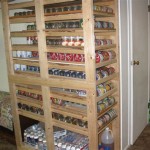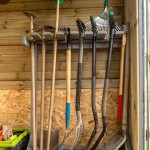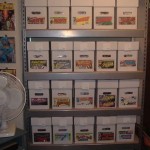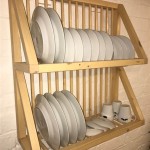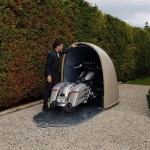Organize Your Space With Lego Table Storage Boxes Ideas
Lego bricks, renowned for their creative potential, are also notorious for their pervasive scattering. The accumulation of these small, colorful components can quickly lead to clutter and disorganization within living spaces. A Lego table, specifically designed for building and play, offers a centralized area. Optimizing this setup with integrated storage solutions provides a practical approach to maintaining a tidy and functional environment. Utilizing storage boxes in conjunction with a Lego table allows for efficient management of Lego bricks, fostering a more organized play space and streamlining cleanup procedures.
The design and implementation of effective Lego storage directly impact usability and the overall organization of a space. Thoughtful consideration of storage container type, size, placement, and accessibility contributes significantly to the success of the system. A well-organized Lego space encourages creative play, reduces frustration related to finding specific pieces, and minimizes the time spent on tidying up after building sessions. This article explores a range of Lego table storage box ideas, focusing on practical solutions that can be adapted to various space constraints and individual organizational preferences.
Key Point 1: Selecting the Right Type of Storage Boxes
The selection of appropriate storage boxes forms the foundation of any effective Lego organization system. Several factors influence this decision, including the quantity of Lego bricks, the available space, and the desired level of organization. Different types of storage boxes offer varying advantages and disadvantages, making it essential to evaluate the needs of the specific Lego collection before making a purchase.
Clear plastic storage boxes are a popular choice due to their transparency. This feature allows for easy identification of contents without the need to open each box. Clear boxes are available in a wide range of sizes and configurations, accommodating different types of Lego bricks, from large baseplates to small, specialized pieces. The ability to visually assess the contents of each container simplifies the process of locating the desired elements, enhancing the building experience.
Alternatively, opaque storage boxes can be used, particularly if a more aesthetically streamlined appearance is preferred. While these boxes lack the visibility offered by clear containers, they often come in a variety of colors and materials, allowing for integration with existing decor. Labeling opaque boxes with detailed descriptions or images of the contents is crucial to maintain organization and avoid unnecessary rummaging.
Drawer-based storage systems represent another option for Lego organization. These systems typically consist of a series of drawers, often nested within a larger cabinet or unit. Drawers can be particularly useful for storing smaller Lego pieces, providing a designated space for each type of element. The drawer configuration allows for easy access and retrieval, minimizing the risk of spills or disarray.
For larger Lego collections, modular storage solutions may be the most practical choice. These systems typically consist of individual storage units that can be stacked or arranged to fit the available space. Modular units offer flexibility and scalability, allowing the storage system to grow as the Lego collection expands. The individual units can be easily reconfigured to accommodate changing organizational needs.
Ultimately, the ideal storage box is durable, easy to clean, and appropriately sized for the Lego bricks it is intended to hold. Careful consideration of these factors will contribute to the development of an efficient and sustainable Lego organization system.
Key Point 2: Integrating Storage Boxes with the Lego Table
The seamless integration of storage boxes with the Lego table is essential for creating a functional and organized play space. The placement and accessibility of storage containers directly impact the user experience and the overall ease of cleanup. Several strategies can be employed to effectively integrate storage boxes into the Lego table setup.
One approach is to incorporate built-in storage compartments directly into the design of the Lego table. This can be achieved by constructing a table with drawers, shelves, or recessed areas specifically designed to hold storage boxes. Built-in storage offers a clean and integrated aesthetic, minimizing the visual clutter of separate storage containers. The placement of these compartments should be strategic, ensuring easy access to Lego bricks during building sessions.
Another option is to utilize storage containers that fit directly beneath the Lego table. This approach maximizes the use of vertical space, providing ample storage without occupying additional floor area. The height of the table legs should be sufficient to accommodate the chosen storage boxes, allowing for easy access and retrieval. Rolling storage carts can be particularly useful in this context, providing mobility and flexibility in arranging the play space.
Alternatively, storage boxes can be placed on shelves or in cabinets located adjacent to the Lego table. This approach allows for a more flexible arrangement, as the storage containers can be easily moved or reconfigured as needed. Shelves provide easy visibility and access to the contents of the storage boxes, while cabinets offer a more concealed storage solution. The placement of shelves or cabinets should be carefully considered, ensuring that they are within easy reach of the Lego table.
In addition to the placement of storage containers, the organization within each box is also important. Sorting Lego bricks by color, size, or type can significantly enhance the building experience. Dividers within the storage boxes can be used to create individual compartments for different categories of bricks. This level of organization minimizes the time spent searching for specific pieces, allowing for more focused and creative play.
The integration of storage boxes with the Lego table should prioritize accessibility, organization, and aesthetic appeal. A well-designed system will streamline the play process and promote a tidy and functional environment.
Key Point 3: Optimizing Storage for Different Lego Collections
The optimal storage solution for Lego bricks varies depending on the size and composition of the collection. A small collection of basic bricks requires a different approach than a large collection of specialized elements or assembled models. Understanding the specific characteristics of the Lego collection is crucial for designing an effective storage system.
For small Lego collections, a single storage box or a set of stackable containers may suffice. The focus should be on simplicity and ease of use, ensuring that the bricks are easily accessible for play. Sorting by color or type is not always necessary for small collections, as the contents can typically be easily scanned and retrieved.
Medium-sized Lego collections benefit from a more structured organization system. Dividing the bricks into categories based on color, size, or type can significantly improve the efficiency of the building process. Using multiple storage boxes or a drawer-based system allows for a more granular level of organization. Labeling each container with its contents is recommended to facilitate easy retrieval.
Large Lego collections require a comprehensive storage solution that addresses both organization and capacity. Modular storage systems, with multiple units and customizable compartments, are often the most practical choice for managing extensive collections. Sorting by type, such as plates, bricks, slopes, and tiles, is essential for maintaining order and minimizing search time. Consider dedicating specific storage areas for instruction manuals, baseplates, and assembled models.
For Lego enthusiasts who frequently build and disassemble models, a system that allows for easy disassembly and storage of individual components is crucial. Using separate storage boxes for the elements of each model can simplify the rebuilding process. Alternatively, storing disassembled models in resealable bags, labeled with the model name and number, can provide a compact and organized storage solution.
Regardless of the size of the Lego collection, regular maintenance and reorganization are essential for maintaining a functional storage system. Periodically review the contents of each storage box, removing any unwanted or duplicate bricks. Reorganize the storage system as needed to accommodate changes in the Lego collection or the user's organizational preferences. This proactive approach will ensure that the Lego storage system remains efficient and effective over time. Consider rotating through sets that are less used to keep things fresh and organized.
Effectively organizing Lego bricks with storage boxes requires careful consideration of the type of storage containers, their integration with the Lego table, and the specific characteristics of the Lego collection. By implementing these strategies, individuals can create a Lego play space that is both functional and aesthetically pleasing, fostering creativity and minimizing clutter.

Diy Lego Table With Storage Abby Organizes

Best Lego Storage And Organization Tools Reviews By Wirecutter

How To A Large Lego Table For Older Kids Ers

Getting Organized With The Best Lego Storage Ideas

How We Built A Small Lego Room With

How To Build A Lego Table With Storage Simple Diy Project

Living With Legos Reality Based Storage And Organization Ideas Frugal Fun For Boys Girls

Diy Lego Table With Storage Abby Organizes

20 Lego Table Ideas With Brilliant Storage Solutions Helpwithdiy

Lego Storage Ideas Solutions Real Life Examples
Related Posts


